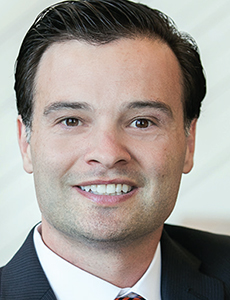Most People Don’t Know CA Allows WC Payments to Mexican Health Providers — And It Works

In Southern California, U.S. workers have long sought health care just across the border in Tijuana when their employer-sponsored plans wouldn’t cover things like elective procedures. Likewise, many Mexican nationals who work in that region prefer to receive care administered and approved by their native country. This gave rise to Mexican HMO Sistemas Medicos Nacionales, S.A. de C.V. (SIMNSA).
Though based in Mexico, SIMNSA is licensed by the state of California and often offers cheaper alternatives to U.S.-based health care systems for California workers. SIMNSA’s premiums are reportedly 60 to 70 percent lower compared to U.S. plans. It also boasts shorter wait times due its 400-strong physician network, half of which are employed full-time.
For these reasons, cross-border care is becoming more popular in the realm of workers’ compensation. In some instances, incorporating cross-border care after a worker suffers an injury can present opportunities for payers to save big, while also giving workers the benefit of ease of access.
More Than Dollars and Cents
Chad Hoxie, vice president at Alliant Insurance Services, sees cross-border care as a natural solution to some of the unique characteristics of California’s workers’ comp system — the largest in the country.
“This is an area where we have been helping employers to develop solutions and strategies on both the workers’ compensation and health benefits aspects of their insurance program,” Hoxie explained. “The development of cross-border solutions continues to be a significant area of focus for us in southern California.”
The primary reason Hoxie has found cross-border care solutions beneficial is California’s high cost of doing business. Delivery of care is expensive compared to other states, and litigation drives up claim costs even further.
“Among the contributing factors of the cost drivers are a more prolonged period of medical treatments and much higher-than-average costs of handling claims and delivering benefits,” he said.
The 2018 WCIRB State of the System Report showed that incurred medical benefits represented about 32 percent of California insured system costs in 2017. In the state, the cost to administer a claim is 53 cents per $1 of benefit, which is more than double the U.S. median cost of 23 cents per dollar.
Ultimately though, the growth of cross-border programs comes down to more than dollars and cents.
Related: If You Don’t Speak Your Injured Worker’s Language, They’ll Find a Lawyer Who Does
“We find that a lot of people who are getting their health insurance down in Mexico anyway are more comfortable with this,” said Hoxie. “The feedback we’re getting from employers is that the employees like it and it’s an added benefit. It’s rewarding that employers are getting relief on their balance sheet with something that employees actually like.”
Global Solutions for Individual Injuries
In a piece published June 2018, former Risk & Insurance® workers’ comp columnist Roberto Ceniceros highlighted the benefits of diverse claims staff and “cultural matching” in claims adjusting, which helps to overcome language and other cultural barriers.
He noted insurer Travelers has made strides in this area, hiring more Hispanic nurses and adjusters with a hearty 80 percent year-over-year overall improvement in workers’ comp claims outcomes as a result.
Although results are never guaranteed, Christopher Schaffer, CEO of Charles Taylor TPA, said his company has achieved gains across the U.S., particularly with longshoreman and merchant marine claims.
“We handle state workers’ comp in California, Texas and Florida, where we see most of the cross-border care, and to a lesser extent New York and New England as well,” he explained. “The idea of globalization of medicine has always been part of our game plan.”
When workers have the chance to use their first language with doctors that they trust in their home country, it cascades into other parts of the claim, said Schaffer.
A key advantage of this, once the groundwork of medical networks is established and benchmarks are in place, is less attorney involvement. According to Schaffer, when workers have the chance to use their first language with doctors that they trust in their home country, it cascades into other parts of the claim.

Chad Hoxie, vice president at Alliant Insurance Services
“You have less attorney involvement,” he said. “Doctor and patient understand each other and the treatment plan, and the doctor is communicating with the employer about the process — everybody sings from the same songbook.”
Further expeditious results can be found in the use of medical technology, which lends itself well to connecting experts across borders. Schaffer cites the rise of telemedicine as a component in their cross-border network, especially in the marine world, where injured workers can access their physician in their language, right on the vessel.
In New York and New England, Schaffer sees potential for cross-border care into Canada. Although most stories of general cross-border care with our Northern neighbor focus on Canadian nationals getting treatment in the U.S., there are some examples of the opposite, in Schaffer’s experience.
“You basically have it introduced with people who are commuting,” he said. “They live in Canada and work in the U.S., get injured, and the injury keeps them from commuting. Adjusters traditionally aren’t as scared of Canadian medical care, because the systems are comparable and the language is the same.”
As with any innovation in health care, cross-border treatment for workers’ comp has limitations and presents challenges beyond logistics. But Hoxie said the rise in cross-border care can actually prevent nefarious characters from infiltrating the system.
One tactic fraud rings employ “is the utilization of cappers that distribute marketing materials in predominantly Hispanic neighborhoods and near the U.S.-Mexico border,” he said. “In some of these instances, recruiters were deployed to obtain an injured worker’s signature on items such as an attorney retainer agreement.”
Thus, approved cross-border care can decrease attorney involvement by easing language barrier issues, and also reduce opportunities for the language barrier to inflame an already potentially adversarial situation.
Cross-Border Limitations
Hoxie and Schaffer agree that cross-border care isn’t always the best option. Schaffer noted that “emergent care is one area that’s not great for cross-border. There [are] some privacy concerns with HIPAA. Potential medical malpractice is another issue; they don’t have the same malpractice laws in Mexico.”
More generally, communication remains a primary concern to manage cross-border claims.
“It is critical that the cross-border element does not create barriers to communication, so the structure of the program is critical,” Hoxie said.
Schaffer echoed this sentiment: “You almost have to resist cross-border [care] from happening unless you’re getting information sharing,” Schaffer said.
“Doctor and patient understand each other and the treatment plan, and the doctor is communicating with the employer about the process — everybody sings from the same songbook.” — Christopher Schaffer, CEO of Charles Taylor TPA
“It can be a really positive thing, but in the end you still have to manage that claim even if the care is cheaper, you need those medical reports and you need to have an open dialogue with the providers. We do that with medical networks and agreements.”
While the growth and potential of cross-border care is undeniable, it takes on a marginally tenuous quality in the face of the current U.S. immigration debate. Crossing the border for health care could prove more difficult if border fortifications under the Trump administration take effect.
However, as current strides in cross-border care take hold and expand, the globalization of medicine could prove sturdier than any wall. &










